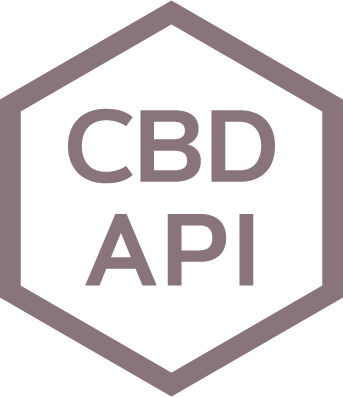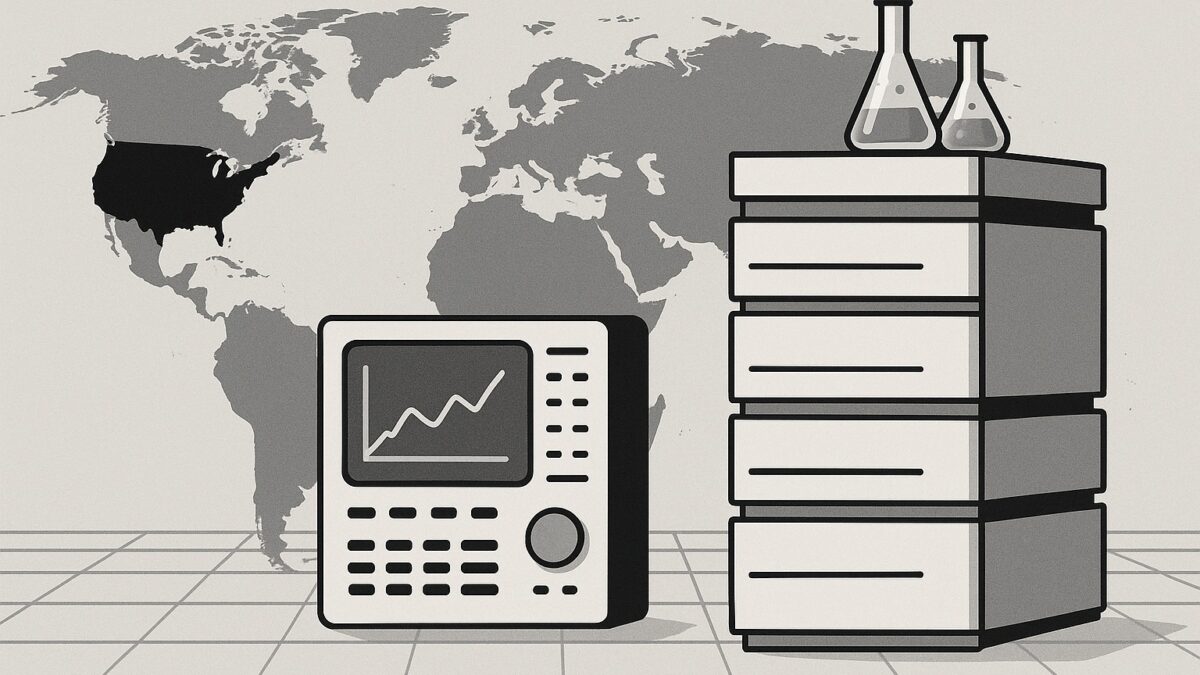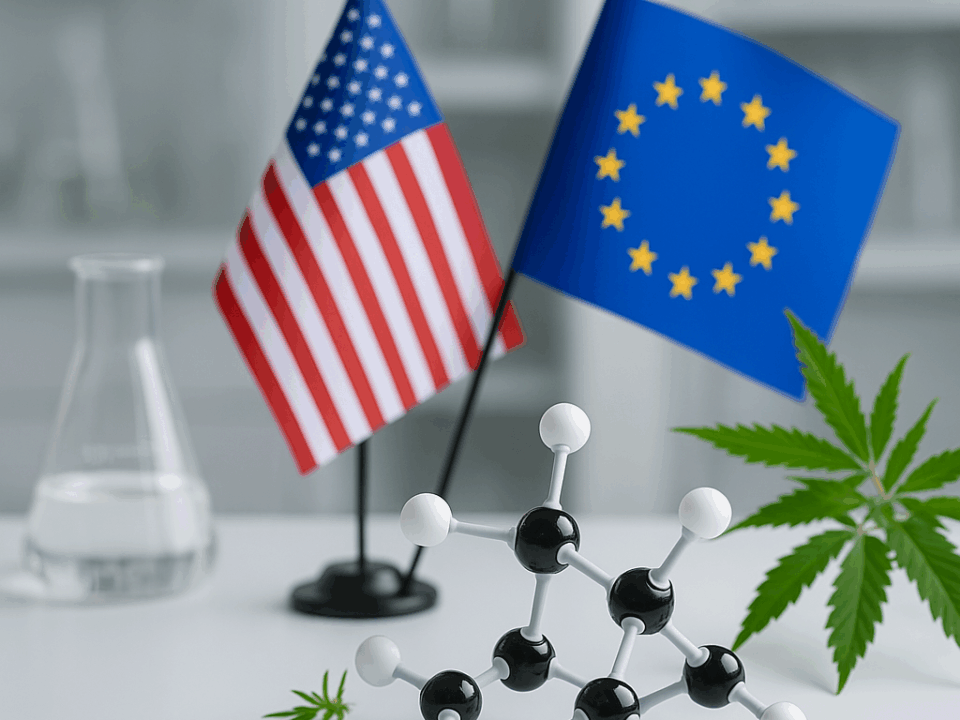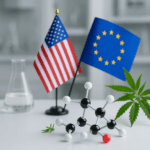
Key Differences in CBD Regulations: USA vs. EU
September 19, 2025
Can Veterans Safely Talk About Cannabis Use?
October 23, 2025Bridging the GMP Certification Gap for Hemp Testing Labs in CBD Exports
The Regulatory Certification Challenge
Exporting hemp-derived CBD products from the U.S. can be fraught with regulatory hurdles, especially when foreign markets demand proof of Good Manufacturing Practice (GMP) compliance for the laboratories that tested the products. A fundamental challenge is that in the United States, the Food and Drug Administration (FDA) does not issue GMP certifications for independent analytical laboratories. This creates a jurisdictional gap: U.S. hemp producers cannot obtain a federally-recognized lab GMP certificate to satisfy overseas regulators. Instead, quality oversight of hemp testing labs happens at the state level, through programs that effectively mirror GMP requirements.
This blog post examines how U.S. hemp testing laboratories navigate this gap. We focus on Colorado’s state-led certification program – a leading example of a GMP-equivalent framework – and how companies leverage it to assure international regulators. We will detail the core requirements of the Colorado Department of Public Health and Environment (CDPHE) Hemp Testing Laboratory Certification (5 CCR 1005-5) and illustrate how attestation packages (including state certifications, audit checklists, and method scopes) demonstrate compliance comparable to international standards like PIC/S GMP, EU-GMP, Australia’s Therapeutic Goods Administration (TGA) regulations, and New Zealand’s Medsafe expectations.
The Jurisdictional Gap: No Federal Lab GMP Certification
Most countries with mature pharmaceutical or supplement regulatory systems expect laboratories to hold a GMP or equivalent certification from a recognized authority. For example, the EU and PIC/S member countries require quality control labs for medicinal products to operate under GMP principles, and regulators often issue GMP certificates or licenses for labs as part of manufacturing sites. In Australia and New Zealand, contract testing labs for therapeutic goods are generally expected to demonstrate GMP compliance either through direct licensure or acceptable alternate credentials.
In the U.S., however, the FDA does not certify or license independent analytical labs for GMP. FDA oversight is focused on manufacturing facilities and, in the lab context, on Good Laboratory Practice (GLP) for preclinical studies or ISO standards for food/testing labs – but there is no federal GMP certificate for a third-party hemp/CBD lab. This gap is problematic when exporting to jurisdictions that ask for “evidence of GMP certification” for any lab involved in testing a consumable product.
U.S. hemp producers have had to explain this gap to foreign import agents and regulators. A common approach is to provide a formal attestation clarifying that the FDA lacks a lab certification program, and to instead highlight the robust state regulatory frameworks in place. In one example letter, a U.S. company exporting CBD isolate explained to an EU regulator:
“…the FDA does not issue GMP certifications for analytical laboratories. Instead, hemp testing laboratories are regulated at the state level, where oversight is established through statutory and regulatory frameworks equivalent in scope to GMP requirements.”
In absence of an FDA certificate, exporters pivot to state certifications and accreditations as evidence. Chief among these is the Colorado CDPHE Hemp Testing Laboratory Certification program, which has emerged as a de facto GMP-equivalent standard in the hemp industry. This program is anchored in Colorado state regulation 5 CCR 1005-5 and provides a comprehensive certification covering personnel, methods, quality systems, and more. Importantly, labs in this program must also maintain ISO/IEC 17025 accreditation for their testing scope, meaning an internationally recognized standard for laboratory competence is layered into the requirements.
State-Level GMP Equivalent: Colorado’s CDPHE Hemp Lab Certification
Colorado’s CDPHE Hemp Testing Laboratory Certification (5 CCR 1005-5) is widely regarded as a gold-standard program that fills the void of federal lab GMP oversight. The CDPHE certification is required for labs testing industrial hemp in Colorado, and it imposes rigorous criteria akin to GMP on those labs. The rule was established to ensure consistent, reliable testing and to instill confidence that hemp products meet safety and quality benchmarks.
CDPHE’s certification process involves an initial and annual on-site inspection by state auditors. Labs must demonstrate compliance with detailed standards of performance before they receive a certificate. These standards explicitly encompass: Personnel Qualifications, Standard Operating Procedures (SOPs), Analytical Methods and Validation, Proficiency Testing, Quality Control/Quality Assurance, Security, Chain of Custody, Sample retention/disposal, Facility (Space), Records Management, and Results Reporting. In other words, Colorado has codified nearly all elements one would expect in a GMP audit of a quality control lab.
Below, we break down the core requirements of the CDPHE program and how they correspond to GMP principles:
Personnel Qualifications and Competency
A hemp testing lab (HTL) in Colorado must have qualified leadership and staff to ensure accurate and reliable results. The state requires each lab to employ a Laboratory Director who meets strict education and experience criteria. Specifically, the lab director must either be a licensed medical doctor with at least 3 years of lab experience in a regulated testing environment, or hold a relevant doctoral degree with equivalent experience. This high bar ensures the lab is led by someone who understands regulated lab operations. Additionally, any Supervisory Analysts (to whom a director might delegate duties) must either meet the Lab Director qualifications or, at minimum, have a bachelor’s degree in a natural science plus appropriate experience. Testing Analysts (bench chemists/microbiologists) also must be qualified by education and training, and the lab must maintain a sufficient number of competent staff to handle the workload without compromising quality.
Crucially, labs are required to have a documented system for personnel competency. Prior to any analyst running samples independently, they must demonstrate acceptable performance on precision, accuracy, specificity, and other relevant parameters, through either proficiency tests or internal quality control challenges. This competency assessment must be documented for each analyst and repeated at least annually (and whenever methods change) to ensure skills remain up-to-date. The CDPHE auditors verify that the lab maintains complete records of each employee’s education, training, experience, and competency evaluations (e.g. CVs, training certificates, proficiency test results).
Furthermore, the lab’s organizational structure must be clear: job descriptions need to define each person’s duties and authorized analyses. If the Laboratory Director delegates certain responsibilities (like day-to-day supervision) to another qualified individual, that delegation must be in writing and on file. Even with delegation, the Director remains ultimately responsible for the overall analytical operation and quality of results, as codified in the rules. The CDPHE checklist explicitly ties the Lab Director’s duty to ensuring all personnel are qualified and all testing is properly performed in compliance with requirements. This mirrors GMP principles in pharmaceutical QC labs, where the head of quality control bears responsibility for the lab’s compliance and output quality.
Validated Methods and Analytical SOPs
Methodology is at the heart of lab quality, and Colorado’s program mandates rigorous method validation and controlled procedures for all analyses. An HTL must maintain a listing of all analytical methods used and analytes tested, and provide this list on request to the Department. More importantly, for each method a lab uses, there must be evidence that the method is fit for purpose and produces reliable results in hemp matrices. The state rules require labs to perform method selection, validation, and verification in line with recognized scientific guidelines (e.g. AOAC, USP, FDA, or USDA guidelines). In fact, Rule 7.1 of 5 CCR 1005-5 calls for a performance-based validation following good laboratory practices and reputable validation protocols before a method can be used for reporting results. The method must be shown to be consistently accurate and reproducible for the intended sample types, with sensitivity adequate for regulatory action limits.
Each lab is expected to produce a comprehensive validation report for its methods, analogous to the validation documentation required under EU/PIC/S GMP (e.g. EU GMP Annex 15). According to CDPHE’s audit checklist guidance, a proper validation report must include: a written validation plan, an introduction and summary of the method, detailed materials and reagents used (with certified reference standards identified), all relevant method parameters, raw data outputs (e.g. instrument chromatograms for each instrument and each test run), calibration data, complete data sets and calculations, defined acceptance criteria and performance results, and a conclusion/discussion with references to any protocols or guidelines followed. In short, the lab must prove the method works as intended, much as a pharma lab would document analytical method validation to satisfy regulators.
In everyday practice, these methods are controlled through Standard Operating Procedures. CDPHE requires that every test has a written SOP detailing how to perform the method, and that this SOP is readily accessible to analysts at all times. The current Lab Director must review and formally approve (sign and date) each SOP and any subsequent revisions before they are implemented. The lab must keep archival copies of old versions for at least three years, ensuring traceability of procedural changes. Any major changes to analytical methods (e.g. new sample prep procedures, new instrument column, etc.) have to be communicated to CDPHE in advance – a level of oversight akin to change control in GMP environments.
An example from a certified lab’s Scope of Certification document illustrates how methods are tracked and controlled. In this scope sheet, the lab lists the category “THC and other Cannabinoid Potency,” and enumerates the specific analytes (over two dozen cannabinoids by name) that it can quantify. For each group of analytes, the document references internal Method Numbers (e.g. “T-069.004, T-001.006, …”) and specifies the matrices validated (such as hemp edible products, concentrates, topicals, beverages). This kind of scope statement is essentially an attestation of validated methods: it shows regulators exactly what the lab is authorized and competent to test, on which product types, using which internally controlled methods.
By enforcing method validation, documented procedures, controlled changes, and clearly defined scopes, the CDPHE program ensures that analytical methods meet the intent of GMP – i.e., tests are scientifically sound and reliably executed. These expectations align with international norms (for instance, EU GMP Annex 15 expects validated analytical methods for quality control, and PIC/S PE009 Part I Chapter 6 requires quality control labs to use suitable methods and SOPs). In Colorado, although the terminologies differ, the substance of compliance is the same.
Documentation Practices and Recordkeeping
Robust documentation is a cornerstone of GMP, and the state certification demands strong documentation practices to ensure traceability and data integrity. Several elements highlight this:
- Chain of Custody (CoC): Labs must have a system to document the complete chain of custody for each sample, from the moment it is received, through all handling and testing steps, to final disposal. This means every transfer or analysis of a sample is recorded chronologically, preventing any ambiguity about where a sample was or who had it at any time. Such rigor in sample tracking mirrors GMP requirements for traceability of materials and data integrity throughout testing.
- Record Retention: All records must be retained for at least three years plus the current year. The rule explicitly mentions that records to be kept include personnel records, SOPs, test data (including instrument raw data printouts), quality control records, chain of custody forms, and proficiency testing results. By requiring retention of raw instrument data and QC records, the program ensures that laboratories maintain an audit trail of how results were obtained and that data can be reviewed or reprocessed if needed – a key aspect of data integrity under GMP (often discussed in context of EU GMP Annex 11 or FDA data integrity guidance).
- Results Reporting: Labs must have procedures to ensure results are reported accurately, and in a timely manner, consistent with their turnaround commitments. They are also required to report certain data points on certificates of analysis, including the measurement uncertainty of each measurement, and to provide quality control data upon client request. These practices align with ISO 17025 requirements and also reflect GMP expectations that any certificate of analysis (CoA) is backed by all supporting data and error margins. In effect, a receiving regulator can see that the lab’s CoA is not just numbers on a page, but has statistical confidence and QC verification behind it.
- Secure and Accessible Records: The lab’s facility must ensure records are secure yet readily accessible to staff. For example, instrument maintenance logs, calibration certificates, and other equipment records should be stored in a way that analysts can review them when operating the equipment (keeping them locked away where staff can’t see them is explicitly “not acceptable”). This requirement highlights a data integrity and quality culture: information critical to performing work correctly must be available at the point of use. It also ensures during inspections that nothing is hidden – auditors can easily review maintenance logs, calibration records, etc., to verify compliance.
Overall, the CDPHE checklist guides labs to implement good documentation practices (GDP) very much akin to pharmaceutical GMP: every action is recorded, data is retained and reviewable, and records are treated as controlled documents. International regulators place heavy emphasis on documentation (for instance, incomplete records or inability to trace data are top audit citations by FDA and TGA). By meeting Colorado’s recordkeeping rules, labs demonstrate the level of documentation control expected under PIC/S and other GMP regimes.
Quality Management and Proficiency Testing
A certified hemp lab in Colorado must operate under a comprehensive Quality Management System (QMS) that drives both quality assurance (QA) and quality control (QC) activities. The regulations state that a lab “must establish and follow a quality assurance and quality control program to ensure sufficient monitoring of laboratory processes and the quality of results reported.”. Practically, this means the lab should have a Quality Manual or equivalent documentation describing its QA policies (similar to a GMP quality manual) and must implement ongoing QC measures for every test.
Key QA/QC requirements include:
- Proficiency Testing (PT): To obtain and maintain certification, labs must successfully participate in external proficiency testing programs approved by CDPHE. These PT programs (for example, provided by vendors like NSI Lab Solutions or Phenova) send the lab blind samples to analyze periodically. The lab’s results are scored against known values. Colorado requires labs to pass these comparisons to prove their competency continually. This is analogous to the inter-laboratory proficiency tests mandated by ISO 17025 and expected by regulators for analytical labs; it provides objective evidence of a lab’s accuracy. In absence of an FDA GMP audit, showing a track record of PT performance is powerful evidence of quality for international reviewers.
- Internal Quality Controls: The SOPs for each method typically include running blanks, standards, and control samples with each batch of tests. The state auditors will check that the lab has appropriate QC samples and acceptance criteria for every analyte. For example, to measure potency, a lab will run calibration standards and quality control samples of known concentration; results must fall within pre-set ranges. The CDPHE rules implicitly require this by mandating “sufficient monitoring of laboratory processes” and by tying into ISO 17025 accreditation (which requires method-specific QC).
- Facility and Security: Quality management extends to the physical environment. Labs must be in a secure facility that prevents unauthorized access to testing areas. Only authorized personnel should be able to enter the lab, which protects sample integrity and data reliability. The facility must also be a fixed structure with adequate infrastructure (proper ventilation, bench space, safety equipment, etc.) to perform analyses safely and effectively. These might seem like basic requirements, but they parallel GMP expectations for approved premises and controlled access to manufacturing/QC areas.
- Equipment Management: Although not explicitly labeled in the question prompt, equipment qualification and maintenance are part of the quality system worth noting. The CDPHE audit checklist includes sections on instrument maintenance and calibration. Labs must follow manufacturer recommendations for preventive maintenance on instruments and keep detailed maintenance logs (with date, person, action, and supervisory review). After any significant maintenance or repairs, the lab must evaluate instrument performance (for instance by running check standards or controls) before resuming sample analysis. These practices ensure instruments remain in calibration and performing within specifications – very much akin to GMP equipment qualification requirements. They also feed into the corrective action system if something goes out of tolerance.
In essence, the CDPHE certification enforces a continuous quality management cycle: plan (SOPs), do (perform tests with controls), check (QC results, proficiency tests), and act (initiate corrective actions if needed). Medsafe (NZ) and TGA (Australia) both expect similar rigor; in fact, New Zealand has adopted the PIC/S GMP guide into its own code, and Australia’s TGA has aligned its requirements with PIC/S as well. A lab operating under Colorado’s system can effectively demonstrate that it has a QA/QC system commensurate with international GMP standards.
Corrective Actions and Continuous Improvement
Even the best labs occasionally encounter deviations – an out-of-specification result, a failing QC sample, an instrument malfunction, etc. A hallmark of GMP compliance is having a formal Corrective and Preventive Action (CAPA) system to address and learn from such issues. The CDPHE program explicitly requires labs to document and implement corrective actions for any identified problems, and to review the effectiveness of those actions over time.
According to the CDPHE audit criteria, whenever something in the lab’s operations does not meet established quality levels or specifications, the lab must generate a corrective action report. The checklist provides a clear breakdown of what corrective action documentation must include, at minimum, mirroring standard CAPA expectations:
- The reason for initiating the corrective action (description of the problem or non-conformance).
- The individual responsible for resolving the issue.
- The date the problem occurred and the date by which it should be resolved.
- A thorough root cause analysis identifying why the issue happened.
- An assessment of the magnitude and impact of the problem – for example, determining if any customer results were affected or if any batches need re-testing.
- The actions taken to correct the issue and prevent recurrence, along with any immediate fixes.
- The signature and date when the corrective action was completed.
- Follow-up review results, i.e. verifying that the action was effective, often by monitoring subsequent performance or doing additional checks.
This level of detail in corrective action reports is exactly what GMP auditors worldwide expect to see. It demonstrates a culture of not just fixing problems but understanding and eliminating root causes, and confirming that fixes work. For instance, if a potency assay yielded a failed quality control due to an expired reagent, the corrective action might involve retraining staff on reagent management and implementing a monthly audit of reagent expiry dates. The lab would document all this, assign who will do it, and later review that indeed no further incidents occurred – all of which would be recorded.
CDPHE inspectors review these records during annual audits to ensure the lab is continuously improving and not repeating mistakes. From an international perspective, a lab that can produce a log of well-managed corrective actions (complete with root cause analyses and outcome monitoring) is demonstrating maturity of its quality system. Regulators like those in the EU, PIC/S, TGA, etc., will find this comparable to what they require under GMP rules for deviation and CAPA management.
Attestation Packages: How Companies Bridge the Certification Gap
Given the robustness of state programs like Colorado’s, U.S. hemp companies have developed attestation packages to present to foreign regulators as evidence that their analytical labs meet “GMP or equivalent” standards. These packages typically comprise a collection of documents and certificates that, taken together, attest to the lab’s accredited status and compliance with GMP-like requirements.
For example, a CBD exporter may assemble a package with components like the following:
- State Certification Letter and Certificate of Compliance: A formal letter from CDPHE (or another state authority) indicating that the lab is certified under the state’s hemp testing laboratory program, and in good standing. The certificate often lists the categories of testing the lab is approved for and the effective dates of certification. A Colorado CDPHE certificate, for instance, will confirm that the lab has met all requirements of 5 CCR 1005-5 for specific testing areas (potency, pesticides, etc.) and is authorized to perform compliance testing in those areas.
- ISO/IEC 17025 Accreditation Certificate and Scope: Because Colorado (and many other states) require ISO 17025 accreditation, the lab’s ISO 17025 certificate and the detailed scope of accreditation are included. The scope document shows which tests and analytes the lab is accredited for, under which methods, just like the example scope we saw for a Colorado lab’s cannabinoid testing. Many regulators worldwide are familiar with ISO 17025 as it is an international standard for lab competence; seeing this gives immediate credibility. In fact, Australia’s TGA explicitly allows an ISO 17025 certificate to be used “in lieu of a GMP Certificate” for contract testing labs, illustrating that ISO accreditation is viewed as a strong indicator of quality system compliance.
- Attestation Letter from the Lab: Often the lab’s own management will write a letter “To Whom It May Concern” outlining the oversight they are under and asserting the equivalence to GMP. In one such attestation, a lab affirmed that it is “certified by the Colorado Department of Public Health and Environment (CDPHE) under the Hemp Testing Laboratory Certification regulations (5 CCR 1005-5)” and went on to summarize that the CDPHE program entails “rigorous standards that encompass personnel qualifications, validated analytical methods, SOPs, recordkeeping, proficiency testing, and corrective action systems.”. The letter then explicitly states that while U.S. labs do not get FDA GMP certificates, the CDPHE oversight framework – combined with the lab’s ISO accreditation – provides a level of control equivalent to GMP expectations for data reliability. This kind of attestation, signed by the lab director, directly addresses the concern of equivalency and is very useful for foreign regulators who may not be familiar with Colorado’s program.
- CDPHE Audit Checklists or Inspection Reports: To provide transparency, companies often include copies of the CDPHE audit checklists used during the lab’s certification inspection. For instance, the General Audit Checklist and the Cannabinoid (Potency) Audit Checklist were attachments in one attestation package. These checklists (as we saw) enumerate all requirements the lab was assessed against – effectively providing the regulator with the full list of GMP-like criteria (from personnel, to SOPs, to method validation, etc.). By reviewing these, an overseas regulator can verify that nothing critical is missing: the state program covers the same ground as their own GMP standards. It’s a level of detail that goes beyond a one-page certificate and can greatly increase confidence. Some companies even provide the completed checklists (with the lab’s internal notes or evidence references for each point) to show how they met each requirement.
- Scope of Validated Methods: As discussed, a document listing all the lab’s validated methods and analytes (sometimes this is part of the state certificate or ISO scope, or a separate summary) is included to demonstrate the lab’s technical capability. For example, if exporting a CBD isolate product, the package will highlight that the lab has validated methods for cannabinoid potency in isolates and perhaps stability testing methods, all under controlled procedures. This directly maps to what foreign GMP frameworks expect – e.g., TGA’s guidance asks for “a list of tests a laboratory is authorised to perform” as part of the evidence for GMP clearance.
- Quality Manual or Key SOPs (if requested): While not always included by default due to confidentiality, regulators might request a copy of the lab’s Quality Manual or specific SOPs. TGA, for instance, lists the Quality Manual/Laboratory Manual as an item in the evidence list for overseas lab clearance. A lab operating under CDPHE rules will have a Quality Manual describing its management structure, document control, complaint handling, etc., as well as SOPs for all testing and operations. Companies can provide excerpts from these to show alignment with GMP (for example, an SOP for data review and approval, which might correspond to GMP batch record review procedures, or the section of the manual that describes the internal audit schedule, which parallels GMP self-inspection programs).
By compiling these pieces, U.S. exporters create an attestation package that effectively substitutes for a formal GMP certificate. When a foreign regulator sees the state certification letter, the ISO 17025 accreditation, the lab’s attestation of GMP equivalence, and the detailed checklists, the picture becomes clear: the lab operates under stringent controls and oversight, albeit by state and international standards rather than the FDA. This usually satisfies the “GMP or equivalent” requirement. In fact, many regulators have provisions to accept such evidence. Australia’s TGA, as noted, will accept ISO 17025 accreditation and recent inspection reports in lieu of conducting its own audit, and will even take into account a manufacturer’s oversight of a contract lab as part of the GMP compliance evidence. Similarly, European importers often accept a package of ISO accreditation plus documentation of a robust quality system for labs testing non-medicinal products, especially when a mutual recognition agreement doesn’t apply.
International Alignment: Meeting PIC/S, EU, and Other GMP Benchmarks
It’s important to emphasize that while the labels on oversight are different (state certification vs. federal GMP license), the content of compliance in programs like CDPHE’s is deeply aligned with international GMP benchmarks:
- PIC/S and EU GMP: The Pharmaceutical Inspection Co-operation Scheme (PIC/S) GMP guidelines, followed by many countries (including the EU, Canada, PIC/S members, etc.), require that quality control laboratories for medicinal products follow specific chapters and annexes of GMP. For example, PIC/S GMP Chapter 6 (Quality Control) covers personnel, premises, documentation, and testing operations in a QC lab. Colorado’s requirements for qualified personnel, dedicated lab space, controlled procedures, calibrated equipment, documented records, and validated methods all map onto those PIC/S Chapter 6 expectations. Furthermore, EU GMP Annex 11 (Computerised Systems) and data integrity expectations are reflected in CDPHE’s insistence on record security and availability, audit trails of sample handling, and retention of raw electronic data. Annex 15 (Qualification and Validation) is clearly mirrored in the method validation protocols and equipment maintenance/calibration requirements the state enforces. In practice, a CDPHE-certified lab could undergo a PIC/S GMP audit and have procedures in place for every major item (minus perhaps a few pharma-specific nuances like stability indicating method criteria or GMP-specific vocabulary). Notably, Medsafe in New Zealand recently updated its GMP code to PIC/S PE009 version 14, and a lab presenting the Colorado-style compliance package would be addressing the same fundamentals that Medsafe expects for contract labs.
- TGA (Australia) and Medsafe (NZ): Both Australia and New Zealand treat third-party analytical labs as an extension of the manufacturing supply chain that must be qualified. TGA’s documented approach (through its GMP clearance guidance) is to allow alternate evidence of compliance: a lab can show ISO 17025 accreditation or even GLP compliance to satisfy the requirement for an equivalent GMP standard. The CDPHE certification goes a step further by adding state regulatory audit oversight on top of ISO accreditation, which likely exceeds what TGA needs for clearance. Indeed, TGA asks for recent inspection reports and the lab’s quality manual and method list – all of which are provided in a typical attestation package. Medsafe, on its website, lists Medsafe-certified testing laboratories for pharmaceuticals, indicating that it issues GMP certificates to labs meeting their code. In absence of a U.S. FDA certificate, a Colorado certificate plus ISO may not be a Medsafe certificate, but by demonstrating equivalence, an exporter can often satisfy New Zealand authorities that the intent of their requirements is fulfilled. Additionally, because of cooperative arrangements (Medsafe and TGA share GMP information by agreement), convincing one of these regulators of the lab’s credibility can go a long way.
- Other International Norms: Many countries in the Americas, Asia, and the Middle East also rely on PIC/S or ICH GMP guidance. The concept of a state-run lab certification may be unfamiliar to them, but when broken down into its components, it aligns with what they know (ISO accreditation, proficiency tests, audit trails, etc.). Some regions require that labs be accredited to ISO 17025 and ideally audited by a governmental body – the CDPHE program provides that government audit piece. In the EU, official medicine control labs and contract labs are often GMP-certified by agencies, but for a hemp CBD product (which may be regulated as a supplement or novel food), an ISO 17025 accreditation plus evidence of strong quality systems is usually acceptable. The attestation approach essentially educates the foreign regulator on how the U.S. ensures quality through a patchwork of state rules and accreditation, achieving the “GMP mindset” without a federal certificate.
Conclusion: State Programs Fulfilling GMP Intent
In summary, the lack of an FDA-issued lab GMP certificate need not be a roadblock for U.S. hemp product exporters. State-level programs like Colorado’s CDPHE Hemp Testing Laboratory Certification fill the void by holding labs to GMP-equivalent standards, from personnel competency and method validation to rigorous documentation, quality management, and continuous improvement practices. The core requirements of CDPHE’s 5 CCR 1005-5 – personnel qualifications, SOPs, method validation, QA/QC, records, and corrective action – meet the intent and scope of GMP assurance for laboratory operations. As one certified lab attested, the combination of state oversight and ISO accreditation “provides a level of control equivalent to GMP” in ensuring reliable analytical data.
Quality Audit professionals and international regulators reviewing U.S. CBD exports should take confidence in these state-driven systems. The attestation packages prepared by companies transparently lay out how a given lab is certified, what standards it met (often backed by detailed checklists and method scopes), and how that correlates to international expectations. Regulators in jurisdictions like the EU, PIC/S member states, Australia, and New Zealand will find that although the certificate carries a Colorado state seal instead of an FDA logo, the laboratory’s practices and competencies are indistinguishable from those demanded under GMP. In an industry that exists in a patchwork regulatory space, this approach pragmatically bridges the gap between U.S. domestic oversight and global market requirements.
By recognizing and accepting these functional GMP-equivalents, international authorities can facilitate the global movement of hemp and CBD products without compromising on safety or quality. And for U.S. producers and labs, adherence to programs like CDPHE’s not only opens export opportunities but also inherently improves their operations – driving them to world-class standards of quality that benefit consumers everywhere.
